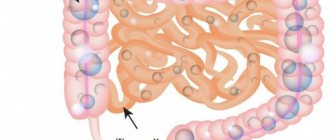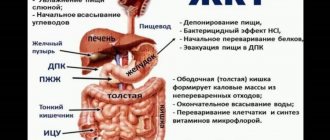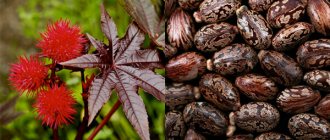Acute diarrhea
A very common condition, usually resulting from eating food or water contaminated with bacteria, their toxins, viruses and protozoa. Infectious diarrhea is usually short-lived, so an infectious cause is rarely identified in patients with diarrhea for more than 10 days. Alcohol intoxication, various drugs, including antibiotics, cytotoxic drugs, non-steroidal anti-inflammatory drugs, can cause acute diarrhea.
Traveler's diarrhea is also recognized
. It develops in the first days in people traveling to exotic regions of the planet other than their own and is associated with the consumption of food and water with a different qualitative and quantitative composition of non-pathogenic microbial flora.
We can talk about the acute nature of diarrhea if the duration is no more than 3 weeks; otherwise, diarrhea is considered chronic.
Diarrhea due to severe stress
I noticed that as soon as I get nervous, diarrhea immediately begins. The first time this happened to me was back in school, before my final exams. Since then, any stress or even just strong anxiety leads to weakening me. Before my own wedding, sorry for the detail, I didn’t come out of the closet. How can we explain such a strange relationship?
Not only poor nutrition, dysbiosis and physical inactivity are dangerous for the intestines. In 80% of cases, functional disorders of this organ arise due to stress. It is not for nothing that this disorder is also called “intestinal neurosis.”
The functional disorders of the gastrointestinal tract that develop in this case can be explained by a disruption in the interaction between the digestive and nervous systems. After all, our intestines have their own regulatory mechanism, it is autonomous from the central nervous system, but is part of the autonomic nervous system. The operation of this mechanism is controlled by the brain (by the way, the amygdala, located in this organ, is responsible for both the response to stress and intestinal motility). The brain sends signals to empty, and the intestines respond by reporting that the order has been carried out. But under stress, the brain already receives incorrect signals, to which the intestines respond with pain.
It is not surprising that people who are emotional, have high anxiety and low resistance to stress most often suffer from stomach problems. It is not for nothing that women are diagnosed with irritable bowel syndrome 4 times more often than men, because they, as a rule, perceive everything that happens more acutely. But in general, this ailment is more typical for young and middle-aged people engaged primarily in intellectual work.
Chronic diarrhea
Chronic diarrhea manifests itself in various diseases:
- stomach (atrophic gastritis, previous gastrectomy);
- pancreas (chronic pancreatitis);
- liver and gallbladder (bile duct obstruction);
- thin (enteritis, Crohn's disease, celiac disease, lactase deficiency);
- large intestine (nonspecific ulcerative colitis, Crohn's disease, non-infectious colitis, polyposis).
Of particular importance are tumor lesions of the digestive organs and endocrine glands, vascular diseases, including ischemic intestinal damage, diseases of the endocrine system (diabetes, thyrotoxicosis).
The most common cause of chronic diarrhea is a functional disorder called irritable bowel syndrome.
. This condition usually develops at a young age against the background of psycho-emotional stress and depression. With IBS, the frequency of bowel movements increases, and the stool may be soft, liquid, or pellet-like. Diarrhea rarely occurs at night and is most severe before and after breakfast. At other times of the day, the patient experiences constipation and other characteristic symptoms (pain, bloating, rumbling). The stool often contains mucus, but never blood, and the stool volume is less than 200 g. per day.
Why is the intestine irritated?
Irritable bowel syndrome (IBS) affects both men and women equally. Most often, intestinal disorders due to nervousness occur in residents of cities2 with a busy pace of life and frequent stress.
The basis for the occurrence of the syndrome is emotional instability. An uncontrollable urge to have a bowel movement, ending with the release of loose stool, can be preceded not only by anxiety, fear or a feeling of sadness and melancholy, but also by intense positive emotions. From a physiological point of view, they are also stress.
Nervous tension causes the adrenal glands to produce stress hormones: cortisol, adrenaline and norepinephrine. Under their influence, the body adapts to the new environment: the frequency of heart contractions and breathing increases, the pupils dilate, thought processes and muscle reactions accelerate. However, the reaction may be excessive3. In particular, stress can provoke disturbances in intestinal motility3.4. With the accelerated movement of intestinal contents, the reabsorption of water and electrolytes is disrupted, resulting in loose stools.
The main manifestations of psychogenic diarrhea:
- sudden, irresistible urge to defecate, arising against the background of emotional stress;
- diarrhea more than 3 times a day;
- normal stool volume, on average 200 ml per day;
- absence of episodes of diarrhea during night rest;
- loud rumbling, discomfort, or migrating cramping pain in the abdomen preceding a bowel movement;
- liquid, pasty or watery stools, without mucus, blood, undigested food debris and fat;
- alternating diarrhea with constipation, ending with the release of a small amount of hard, lumpy feces, and a feeling of incomplete bowel movement.
Important! With IBS, there are no infectious or organic diseases of the intestines and other organs of the digestive system. Therefore, before taking any measures to combat diarrhea, you need to consult a doctor and undergo the examination required in this case.
Up to contents
Treatment of diarrhea
Treatment depends on the specific disease, and only a doctor can recommend it.
The greatest danger to the body during heavy or prolonged diarrhea is the loss of fluid and electrolytes, which can lead to serious complications. Therefore, even before seeking medical help, it is necessary to start taking special medications - saline solutions for rehydration.
It is also important to adhere to certain dietary recommendations to prevent irritation of the intestinal mucosa and fermentation processes. Sweets and baked goods, milk, anything fatty, fried, spicy, smoked, canned food, sausages, fresh vegetables and fruits, legumes, soda, coffee and alcohol are prohibited. Recommended are porridges with water (rice, oatmeal), jelly, boiled eggs or steamed omelettes, lean meat (poultry) and soups based on it, crackers, dried fruits, low-fat cottage cheese, boiled vegetables, baked apples and bananas, herbal teas.
Treatment of irritable bowel syndrome
Is it true that irritable bowel syndrome has no cure? And if so, then why do doctors prescribe different pills? There is already a lot of chemicals in our body!
Unfortunately, there is really no specific treatment for irritable bowel syndrome. You can only fight the symptoms. However, you should consult a gastroenterologist and, if necessary, undergo treatment. After all, unstable stool not only significantly reduces the quality of life, but also leads to overload of the large intestine, increasing the risk of hemorrhoids, anal fissures, fistulas and other proctological diseases.
Selective antispasmodics help relieve pain. However, the problem cannot be solved with pills alone; a set of measures is needed. A necessary condition for good intestinal motility is regular physical activity. Swimming, walking, dancing are useful. A proper diet is also very important. You need to eat regularly and in small portions, excluding fried, spicy, and salty foods. If you are prone to constipation, plant fiber and fermented milk products are most beneficial and jelly and crackers are harmful, but if you have frequent diarrhea, the opposite is true. Finally, learning to manage your emotions can be a big help. Yoga, meditation, psychotherapy, or taking sedative medications prescribed by a neurologist are effective in this regard.
If you still have questions, you can ask them using the Doctis service.
DIARRHEA
The etiology and pathogenetic mechanisms of secretory, osmotic, dyskinetic and exudative diarrhea are considered. Algorithms have been proposed to identify the disease that caused acute or chronic diarrhea. A treatment regimen for diarrhea is recommended depending on the predominant pathogenetic mechanism.
The paper deals with the etiology and pathogenetic mechanisms of secretory, osmotic, dyskinetic, and exudative diarrhea, proposes algorithms to detect a disease underlying acute or chronic diarrhea, recommends a treatment regimen for diarrhea in relation to a prevalent pathogenetic mechanism.
A.I. Parfenov – Doctor of Medical Sciences, Head. Department of Pathology of the Small Intestine, Central Research Institute of Gastroenterology
AIParfenov, MD, Head, Department of Small Bowel Pathology, Central Research Institute of Gastroenterology
Introduction
The traditional idea that the normal frequency of bowel movements should be once a day, in the morning, is not always true. Defecation is subject to considerable variability and numerous extraneous influences. This bowel function varies greatly with age and is influenced by individual physiological, dietary, social and cultural factors. In healthy people, the frequency of stool can vary from 3 times a day to 3 times a week, and only changes in the volume and consistency of stool, as well as the admixture of blood, pus or undigested food, indicate illness.
Definition
The stool weight of healthy adults ranges from 100 to 300 g/day, depending on the amount of fiber in the food and the volume of water and undigested substances remaining in it [1]. Diarrhea is frequent or single bowel movement with the release of liquid stool. Diarrhea can be acute if its duration does not exceed 2–3 weeks, and chronic if loose stools continue for more than 3 weeks. The concept of chronic diarrhea also includes systematically profuse stools, the weight of which exceeds 300 g/day. However, for people who eat foods rich in plant fiber, this stool weight may be normal. Watery diarrhea occurs when the amount of water in the stool increases from 60 to 70%. In patients with impaired absorption of nutrients, polyfecal matter predominates, i.e. an unusually large amount of feces consisting of undigested food debris. In case of disturbances of intestinal motor function, stool may be frequent and liquid, but its daily amount may not exceed 200 - 300 g. Thus, an initial analysis of the characteristics of diarrhea makes it possible to establish the cause of the increase in the amount of feces and can facilitate diagnosis and the choice of treatment method.
Pathophysiology of diarrhea
Diarrhea is a clinical manifestation of impaired absorption of water and electrolytes in the intestine. The pathogenesis of diarrhea of various etiologies has much in common. The ability of the small and large intestines to absorb water and electrolytes is enormous. Every day a person receives about 2 liters of water from food. The volume of endogenous fluid entering the intestinal cavity as part of digestive secretions reaches an average of 7 l (saliva - 1.5 l, gastric juice - 2.5 l, bile - 0.5 l, pancreatic juice - 1.5 l, intestinal juice – 1 l). Of the total amount of liquid, the volume of which reaches 9 liters, only 100 - 200 ml, i.e. about 2% is excreted in feces, the rest of the water is absorbed in the intestine. Most of the liquid (70–80%) is absorbed in the small intestine. From 1 to 2 liters of water enters the colon during the day, 70% of it is absorbed, and only 100 - 150 ml is lost in feces. Even minor changes in the amount of liquid in the stool lead to a change in its consistency (unformed or harder than normal). Table 1. Pathogenesis of diarrhea
| Type of diarrhea | Pathogenetic mechanisms | Chair |
| Hypersecretory (increased secretion of water and electrolytes into the intestinal lumen) | Passive secretion: increased hydrostatic pressure due to damage to the intestinal lymphatic vessels (lymphangiectasia, lymphoma, amyloidosis, Whipple's disease) increased hydrostatic pressure due to right ventricular failure Active secretion: secretory agents associated with activation of the adenylate cyclase-cAMP system bile acids long-chain fatty acids bacterial enterotoxins (cholera, Escherichia coli) secretory agents associated with other intracellular second messengers laxatives (bisacodyl, phenolphthalein, castor oil) VIP, glucagon, prostaglandins, serotonin, calcitonin, substance P bacterial toxins (staphylococcus, Clostridium perfringens, etc.) | Abundant, watery |
| Hyperosmolar (reduced absorption of water and electrolytes) | Digestion and absorption disorders: absorption disorders (gluten enteropathy, small intestinal ischemia, congenital absorption defects) membrane digestion disorders (disaccharidase deficiency, etc.) Cavitary digestion disorders: pancreatic enzyme deficiency (chronic pancreatitis, pancreatic cancer) bile salt deficiency (obstructive jaundice) , diseases and resection of the ileum) Insufficient contact time of the chyme with the intestinal wall: resection of the small intestine, entero-enteroanastomosis and interintestinal fistula (Crohn's disease) | Polyfecalia, steatorrhea |
| Hyper- and hypokinetic (increased or slowed rate of transit of intestinal contents) | Increased rate of chyme transit through the intestines: neurogenic stimulation (irritable bowel syndrome, diabetic enteropathy) hormonal stimulation (serotonin, prostaglandins, secretin, pancreozymin) pharmacological stimulation (anthroquinone laxatives, isophenine, phenolphthalein) Slow transit rate scleroderma (combined with bacterial contamination syndrome) blind loop syndrome | Liquid or mushy, not abundant |
| Hyperexudative ("discharge" of water and electrolytes into the intestinal lumen) | Inflammatory bowel diseases (Crohn's disease, ulcerative colitis) Intestinal infections with cytotoxic effects (dysentery, salmonellosis) Ischemic disease of the small and large intestines Protein-losing enteropathies | Liquid, thin with an admixture of mucus and blood |
Transport (absorption and secretion) of water in the intestine depends on the transport of electrolytes. Water and electrolytes are absorbed and secreted by enterocytes and colonocytes. The villous epithelium ensures the absorption of sodium, chlorine and water ions. Their secretion occurs in the crypt epithelium. During the day, 800 mmol of sodium, 100 mmol of potassium and 700 mmol of chlorine enter the intestines with food and juices. Water absorption is a passive secondary process associated with the transport of ions, primarily sodium. Some substances, such as glucose and amino acids, stimulate the absorption of ions and water. In the small intestine, passive transport of water and ions predominates, which is due to the high permeability of enterocyte membranes. Absorption of water and ions occurs through the intercellular spaces. In the ileum and colon, sodium is absorbed through an energy-dependent mechanism, i.e. actively. This mechanism ensures the transport of sodium against the chemical concentration gradient, the negative electrical charge of the mucous membrane, and in some cases against the flow of fluid. Active sodium transport is stimulated by d-hexoses and some amino acids. In this case, the transport mechanism involves a common brush border transporter for glucose, amino acid and sodium. Table 2. Medicines that cause diarrhea
| Laxatives Antacids containing magnesium salts Antibiotics: clindamycin, lincomycin, ampicillin, cephalosporins Antiarrhythmic drugs: quinidine, propranolol Digitalis Medicines containing potassium salts Artificial sugar: sorbitol, mannitol Henodeoxycholic acid Cholestyramine Sulfasalazine Anticoagulants |
The final retention of sodium and water occurs in the colon. Up to 70% of sodium entering the colon is absorbed. Active transport of sodium is carried out in the colon electrogenically using a sodium pump or the combination of sodium with a hydrogen, chlorine or bicarbonate ion. Sodium, actively absorbed from the lumen of the colon into the paracellular water channels, increases the osmotic pressure in them, and consequently, the hydrostatic pressure in them. An increase in hydrostatic pressure causes the absorption of water through the low-permeability membrane of capillaries into the blood plasma. So, water is absorbed passively, following sodium. The colon can absorb up to 5 liters of water per day. If more fluid enters it, diarrhea appears. Such disorders arise due to disorders of digestion, absorption, secretion and intestinal motility. In this case, the small and large intestine must be considered as a single physiological unit.
Etiology and pathogenesis
In table Figure 1 shows the main types of diarrhea and the pathogenetic mechanisms underlying them. Four mechanisms are involved in the pathogenesis of diarrhea: intestinal hypersecretion, increased osmotic pressure in the intestinal cavity, impaired transit of intestinal contents and intestinal hyperexudation. The mechanisms of diarrhea are closely related, however, each disease is characterized by a predominant type of ion transport disorder. This explains the features of the clinical manifestations of various types of diarrhea.
Secretory diarrhea
Secretory diarrhea develops due to increased active secretion of sodium and water into the intestinal lumen. The main activators of this process are bacterial toxins (for example, cholera endotoxin), enteropathogenic viruses, some drugs and biological active substances. A typical example of secretory diarrhea is diarrhea due to cholera. The secretory effect is mediated by the mediator 3′-5′-AMP. Cholera endotoxin and many other substances increase the activity of adenyl cyclase in the intestinal wall with the formation of cAMP. As a result, the volume of secreted water and electrolytes increases. This secretes a large amount of sodium. Table 3. Principles of treatment for different types of chronic diarrhea
| Predominant type of diarrhea | Diseases | Features of treatment of diarrhea | General therapeutic measures |
| Secretory | Intestinal infections, terminal ileitis, short bowel syndrome, postcholecystectomy diarrhea | Rehydration, cholestyramine, secretion inhibitors: octreotide | Diet No. 4, elimination diets (gluten-free, alactose, etc.). Antibacterial drugs: intetrix, nifuroxazide, entero-sediv, furazolidone, nalidixic acid, nitroxoline, co-trimo xazole. Bacterial Preparations: hilak-forte, Baktisubtil, bifidumbac- terin, bificol. Knitting, enveloping, adsorbents: attapulgite bismuth subsalicylate smecta, tannacomp |
| Hyperosmolar | Celiac enteropathy, Whipple's disease, amyloidosis, lymphoma, primary lymphangiectasia, common variable hypogammaglobulinemia | Absorption stimulants: octreotide, riodipine, anabolic hormones; digestive enzymes: creon, thylactase; complex metabolic therapy | |
| Hyperexudative | Ulcerative colitis, Crohn's disease | Sulfasalazine, mesalazine, corticosteroids | |
| Hyperkinetic | Irritable bowel syndrome, endocrine dyskinesias | Motor modulators: loperamide, debridate (trimebutine), psychotherapy, treatment of the underlying disease |
Secretory diarrhea is also caused by free bile acids and long-chain fatty acids, secretin, vasoactive peptide, prostaglandins, serotonin and calcitonin, as well as laxatives containing anthroglycosides (senna leaf, buckthorn bark, rhubarb) and castor oil. The secretory form is characterized by painless, profuse watery diarrhea (usually more than 1 liter). If there is a malabsorption of bile acids or poor contractile function of the gallbladder, the feces usually become bright yellow or green in color. The osmolar pressure of intestinal contents during secretory diarrhea is significantly lower than the osmolar pressure of blood plasma.
Hyperosmolar diarrhea
Hyperosmolar diarrhea develops due to an increase in the osmotic pressure of the chyme. An increase in osmotic pressure in the intestinal cavity is observed with disaccharidase deficiency (for example, with lactose intolerance), with malabsorption syndrome, with an increased intake of osmotically active substances into the intestine (salt laxatives containing magnesium and phosphorus ions, antacids, sorbitol, etc.). With hyperosmolar diarrhea, the stool is profuse (polyfecal matter) and may contain a large amount of semi-digested food residue (steatorrhea, creatorrhoea, etc.). Its osmotic pressure is higher than the osmotic pressure of blood plasma.
Hyper- and hypokinetic diarrhea
An important factor in the development of diarrhea is disruption of the transit of intestinal contents. Laxatives and antacids containing magnesium salts contribute to an increase in the transit rate. An increase and decrease in intestinal motor activity is especially often observed in patients with neurogenic diarrhea and irritable bowel syndrome. With hyper- and hypokinetic diarrhea, the stool is liquid or pasty, not abundant. The osmotic pressure of intestinal contents approximately corresponds to the osmotic pressure of blood plasma.
Hyperexudative diarrhea
Hyperexudative diarrhea occurs due to the “discharge” of water and electrolytes into the intestinal lumen through the damaged mucous membrane and is accompanied by the exudation of protein into the intestinal lumen. This type of diarrhea is observed in inflammatory bowel diseases: Crohn's disease and ulcerative colitis, intestinal tuberculosis, salmonellosis, dysentery and other acute intestinal infections. Hyperexudative diarrhea can also be observed with malignant neoplasms and ischemic intestinal diseases. With hyperexudative diarrhea, the stool is liquid, often with blood and pus. The osmotic pressure of feces is often higher than the osmotic pressure of blood plasma.
Clinical features of diarrhea
There are acute and chronic diarrhea. Acute diarrhea.
Diarrhea is considered acute when its duration does not exceed 2–3 weeks and there is no history of similar episodes. Its causes include infections, inflammatory processes in the intestines and medications. Acute infectious diarrhea is characterized by general malaise, fever, lack of appetite, and sometimes vomiting. It is often possible to establish a connection with the consumption of poor quality food and travel (tourist diarrhea). Features of the clinical picture depend on the type of causative agent of acute intestinal infection. Thus, vomiting is more typical for foodborne infections caused by staphylococci, and almost never occurs in patients with salmonellosis and dysentery. Bloody, loose stools indicate damage to the intestinal mucosa by pathogenic microbes such as Shigella Flexner and Sonne, Campylobacter jejuni or E. coli with enteropathogenic properties. Acute bloody diarrhea may be the first manifestation of ulcerative colitis and Crohn's disease. In the acute form, the patient's condition is serious due to intoxication and abdominal pain.
Diarrhea is caused by many drugs [2, 3]. In table Table 2 lists the main drugs that can cause diarrhea. In pseudomembranous colitis, which develops as a result of antibiotic therapy, a severe form of diarrhea occurs, characterized by sudden, severe watery diarrhea, sometimes with a small amount of blood in the stool, as well as high fever. In other cases, diarrhea does not worsen the general condition and stops after stopping the medication. Examination of the patient allows you to assess the degree of dehydration. With a significant loss of water and electrolytes, the skin becomes dry, its turgor decreases, and tachycardia and hypotension are observed. Due to large losses of calcium, there is a tendency to cramps, which may be preceded by the symptom of a “muscle roll”, observed when pinching or hitting the biceps brachii muscle. Along with the usual physical examination, it is necessary to examine the patient’s stool and conduct a proctological examination. The presence of blood in the stool, anal fissure, paraproctitis or fistulous tract gives reason to assume that the patient has Crohn's disease. During stool microscopy, it is of great importance to identify inflammatory cells, fat, protozoa and worm eggs. Sigmoidoscopy allows you to make a diagnosis of ulcerative colitis (bleeding, easily vulnerable mucous membrane, often with erosive-ulcerative changes), dysentery (erosive proctosigmoiditis), as well as pseudomembranous colitis based on the detection of characteristic dense fibrinous deposits in the form of plaques. The absence of plaques does not yet exclude the possibility of this complication of antibacterial therapy, since pathological changes can be localized in the proximal parts of the colon.
In the vast majority of patients with acute diarrhea, the diagnosis of the disease can be established on the basis of complaints, anamnesis, physical examination, proctological examination, macro- and microscopic examination of stool [4]. The sequence of the diagnostic process is presented in Diagram 1. The basis of diagnosis is macro- and microscopic examination of feces. First of all, parasitic diseases are excluded. The presence of blood in the stool indicates a connection between diarrhea and inflammatory diseases. This assumption is confirmed by the detection of a large number of inflammatory cells (leukocytes and desquamated epithelium) in the stool, characteristic morphological changes in the mucous membrane of the colon, detected using sigmoidoscopy, as well as other instrumental studies. In the absence of inflammatory changes in the intestines, the most likely connection between diarrhea and malabsorption of various etiologies. Some forms of acute diarrhea can be caused by enteroviruses. Characteristic features of viral enteritis are the absence of blood and inflammatory cells in the stool, the possibility of spontaneous recovery and the lack of effect of antibacterial therapy. The listed features should be taken into account in the differential diagnosis between infectious and non-infectious inflammatory bowel diseases. Chronic diarrhea.
Diarrhea is considered chronic if it lasts more than 3 weeks. The only exceptions are infectious diseases, which can sometimes last a long time, but end in recovery [5]. Chronic diarrhea is a symptom of many diseases and elucidation of its causes should be based primarily on history, physical examination and macro- and microscopic examination of stool. At the same time, pay attention to the consistency of stool, its smell, volume, the presence of blood, pus, mucus or fat in it. Sometimes the diagnosis of chronic diarrhea due to malabsorption can be made by history and physical examination. When collecting anamnesis, you should pay attention to the duration of diarrhea, the characteristics of its onset, the volume of stool during the day, the presence of tenesmus and bowel movements at night, the connection of diarrhea with abdominal pain or flatulence, the presence of blood in the stool, the frequency and severity of intestinal motility, changes body weight. In diseases of the small intestine, the stool is bulky, watery or fatty. With diseases of the colon, stool is frequent, but less abundant and may contain blood, pus and mucus. Diarrhea associated with colon pathology, unlike enterogenous diarrhea, is in most cases accompanied by abdominal pain. With diseases of the rectum, the latter becomes more sensitive to stretching, and stools become frequent and scanty, tenesmus and false urges to defecate appear. A thorough microscopic examination of feces can detect signs of inflammation - accumulations of leukocytes and desquamated epithelium, characteristic of inflammatory diseases of an infectious or other nature. A scatological examination reveals excess fat (steatorrhea), muscle fibers (creatorrhoea) and lumps of starch (amilorrhea), indicating intestinal digestive disorders. The detection of eggs of worms, lamblia and amoebas is also of great importance. It is necessary to pay attention to the pH of the stool, which is usually above 6.0. A decrease in pH occurs as a result of bacterial fermentation of unabsorbed carbohydrates and proteins. One of the causes of chronic diarrhea may be the abuse of laxatives, including their secret use. Increased stool pH usually occurs due to laxative abuse and is detected by phenolphthalein, which turns pink. The sequence of the diagnostic process for chronic diarrhea is presented in Diagram 2. First, following the previous algorithm (see Diagram 1), it is necessary to determine whether the diarrhea is associated with a parasitic and bacterial infection or inflammatory diseases of a different nature. The answer to this question can often be obtained by microscopic and bacteriological examination of stool and sigmoidoscopy. After excluding inflammatory diseases, it is necessary to try to establish the predominant pathogenetic mechanism of chronic diarrhea. To do this, you should determine the weight or volume of feces per day. In the absence of polyfecal matter, hyperkinetic diarrhea is most likely, and with a large volume of feces, hypersecretory or hyperosmolar type of diarrhea. If an excess amount of fat and increased osmolarity are found in the stool, then they speak of hyperosmolar diarrhea associated with impaired intestinal digestion and absorption; in the absence of steatorrhea and hypoosmolarity of feces - hypersecretory diarrhea not associated with a bacterial infection. To clarify the cause of diarrhea, it is advisable to transfer the patient to a starvation diet. If after 1 to 2 days the stool osmolarity exceeds the plasma osmolarity and the diarrhea stops, then malabsorption syndrome or congenital chloridorrhea should be considered. The possibility of secret laxative abuse must also be kept in mind. The most difficult situation is when diarrhea continues under conditions of fasting and stool osmolarity is lower than plasma osmolarity. In this case, an accurate diagnosis is possible only by completely removing fluid from the stomach and duodenum using a nasogastric (duodenal) tube. If there is a large volume of gastric secretion and cessation of diarrhea, Zollinger-Ellison syndrome should be assumed, unless the patient continues to secretly use laxatives. With ongoing diarrhea, the most likely connection between secretory diarrhea and a hormonally active tumor, for example, VIPoma. The proposed scheme for diagnosing diarrhea from symptom to disease implies a rational approach to the use of appropriate tests in the process of etiological diagnosis. Diet changes often help make the diagnosis. For example, a good therapeutic effect observed after transferring a patient to an alactose diet makes it possible to establish a diagnosis of hypolactasia without conducting a large number of invasive diagnostic studies.
Treatment
Diarrhea is not a disease, but a symptom. Therefore, for etiological or pathogenetic treatment, nosological diagnosis is necessary. In table Table 3 lists diseases with similar mechanisms of diarrhea and outlines the principles of treatment for each type of diarrhea. As can be seen from table. 3, the treatment of diarrhea has some features depending on its pathogenesis. Some therapeutic approaches are common to each of the 4 types of diarrhea. These include diet, prescription of antibacterial drugs and symptomatic agents (adsorbents, astringents and enveloping substances).
Diet
For intestinal diseases accompanied by diarrhea, nutrition should help inhibit peristalsis and reduce the secretion of water and electrolytes into the intestinal lumen. The set of products in composition and quantity of nutrients must correspond to the enzymatic capabilities of the pathologically altered small intestine. In this regard, with diarrhea, the principle of mechanical and chemical sparing is always observed to a greater or lesser extent, depending on the severity of the process [6]. During the acute period of diarrhea, foods that enhance the motor-evacuation and secretory functions of the intestine are excluded. Diet No. 4b almost completely meets these requirements. It is prescribed during periods of exacerbation of diarrhea. A physiological diet with a limitation of table salt to 8–10 g/day, a moderate limitation of mechanical and chemical irritants of the gastrointestinal tract, the exclusion of foods that increase diarrhea, fermentation and putrefaction in the intestines, as well as strong stimulants of gastric secretion. All dishes are steamed and eaten pureed.
Antibacterial drugs
Antibacterial therapy is prescribed to restore intestinal eubiosis. For acute diarrhea of bacterial etiology, antibiotics, antimicrobial agents from the group of quinolones (nitroxoline), fluoroquinolones (ofloxacin, ciprofloxacin, etc.), sulfonamide drugs (biseptol, sulgin, phthalazol, etc.), nitrofuran derivatives (furadonin, furazolidone) and antiseptics are used. Preference is given to drugs that do not disturb the balance of microbial flora in the intestine. These include intetrix, nifuroxazide, enterosediv. Intetrix
contains in one capsule tiliquinol 0.05 g, tiliquinol N-dodecyl sulfate 0.05 g, tilbroquinol 0.2 g. The drug is effective against most gram-positive and gram-negative pathogenic intestinal bacteria, fungi of the genus Candida, as well as Entamoeba hystolitica.
For acute infectious and parasitic diarrhea, Intetrix is prescribed 4 - 6 capsules per day; course of treatment is 5 – 6 days. For intestinal amebiasis, 4 capsules per day are prescribed; course of treatment is 10 days. Nifuroxazide
is prescribed for acute diarrhea, 1 capsule (0.2 g) 4 times a day.
The course of treatment should not exceed 7 days. Enterosediv
is a combination drug containing streptomycin, bacitracin, pectin, kaolin, sodium menadione and sodium citrate.
The drug is prescribed 1 tablet 2 – 3 times a day. The average duration of treatment is 7 days. Dependal-M
is available in tablets and suspension form. One tablet contains 0.1 g of furazolidone and 0.3 g of metronidazole. The suspension also includes pectin and kaolin. Dependal-M is prescribed 1 tablet (or 4 teaspoons of suspension) 3 times a day. In most patients with acute diarrhea, the therapeutic effect is observed within 1–2 days; treatment is continued for 2–5 days.
Bacterial preparations
Some bacterial drugs can be prescribed for diarrhea of various origins as an alternative therapy. These include bactisubtil, linex and enterol. Bactisubtil
is a bacterial culture IP-5832 in the form of spores with the addition of calcium carbonate, white clay, titanium oxide and gelatin.
For acute diarrhea, the drug is prescribed 1 capsule 3-6 times a day; in severe cases, the dose can be increased to 10 capsules per day. For chronic diarrhea, bactisubtil is prescribed 1 capsule 2 – 3 times a day. The drug should be taken 1 hour before meals. Enterol
contains a lyophilized culture of Saecharamyces doulardii.
The drug is prescribed 1 - 2 capsules 2 - 4 times a day, the course of treatment is 3 - 5 days. Enterol is especially effective for diarrhea that develops after antibiotic therapy. Other bacterial drugs (bifidumbacterin, bificol, lactobacterin, linex, acylact, normaflor) are usually prescribed after a course of antibacterial therapy. The course of treatment with bacterial preparations can last up to 1 – 2 months. Hilak-forte
is a sterile concentrate of metabolic products of normal intestinal microflora: lactic acid, lactose, amino acids and fatty acids. These substances help restore the biological environment of the intestine, necessary for the existence of normal microflora, and suppress the growth of pathogenic bacteria. Hilak-forte is prescribed 40-60 drops 3 times a day. After 2 weeks, the dose of the drug is reduced to 20-30 drops 3 times a day and treatment is continued for another 2 weeks.
Symptomatic remedies
This group includes adsorbents that neutralize organic acids, astringents and coating agents. These include smecta, attapulgite, tannacomp. Smecta
contains dioctahedral smectite - a substance of natural origin that has pronounced adsorbing properties and has a protective effect on the intestinal mucosa.
Being a stabilizer of the mucous barrier and having enveloping properties, smecta protects the mucous membrane from toxins and microorganisms. Prescribed 3 g (1 sachet) 3 times a day 15 - 20 minutes before meals in the form of a mash (the contents of the sachet are dissolved in 50 ml of water). Given the pronounced adsorbing properties of the drug, smecta should be taken separately from other drugs. Attapulgite
is a naturally occurring purified aluminum magnesium silicate in colloidal form.
Attapulgite has a high ability to adsorb pathogenic pathogens and bind toxic substances, thereby helping to normalize the intestinal flora. The drug is not absorbed from the gastrointestinal tract and is used for acute diarrhea of various origins. The initial dose for adults is 4 tablets, then after each stool another 2 tablets. The maximum daily dose is 14 tablets. The tablets should be swallowed without chewing, with liquid. The duration of treatment with attapulgite should not exceed 2 days. The drug interferes with the absorption of simultaneously prescribed drugs, in particular antibiotics and antispasmodics, so the interval between taking attapulgite and other drugs should be several hours. Tannacomp
is a combination drug.
It contains tannin albuminate (0.5 g) and ethacridine lactate (0.05 g). Tannin albuminate (tannic acid combined with protein) has astringent and anti-inflammatory properties. Ethacridine lactate – antibacterial and antispastic. Tannacomp is used for the prevention and treatment of diarrhea of various origins. To prevent diarrhea among tourists, the drug is prescribed in 1 tablet. twice a day, for treatment - 1 tablet. 4 times a day. Treatment ends with the cessation of diarrhea. For chronic diarrhea, the drug is prescribed in 2 tablets. 3 times a day for 5 days. Calcium polycarbophil
is used as a symptomatic remedy for non-infectious diarrhea.
The drug is prescribed 2 capsules per day for 8 weeks. To treat hologenic diarrhea caused by bile acids, ion exchange resins - cholestyramine, vazazan, questran - are successfully used [7]. Cholestyramine
is prescribed 4 g 2 - 3 times a day for 5 - 7 days.
Motor regulators
Loperamide hydrochloride is widely used to treat diarrhea, which reduces intestinal tone and motility, apparently due to binding to opiate receptors [8]. Unlike other opioids, loperamide does not produce central opiate-like effects, including blockade of small intestinal propulsion. The antidiarrheal effect of the drug is realized through the m-opiate receptors of the enterin system. There is evidence that direct interaction with enteric opiate receptors alters epithelial cell function by reducing secretion and improving absorption. The antisecretory effect is accompanied by a decrease in intestinal motor function. For acute diarrhea, the initial dose of loperamide is 2 capsules, then 1 (0.002 g) capsule is prescribed after each bowel movement; in the case of loose stools - until the number of bowel movements is reduced to 1 - 2 per day. The maximum daily dose for adults is 8 capsules. If normal stool appears and there are no bowel movements within 12 hours, treatment with loperamide should be discontinued. Possible side effects: dry mouth, abdominal pain, bloating, nausea, vomiting, constipation, weakness, drowsiness, dizziness and headache. Contraindications: ulcerative colitis, pseudomembranous colitis, acute dysentery. Loperamide should be prescribed with extreme caution to patients with impaired liver function. Currently, a search is underway for drugs that affect the processes of absorption and secretion in the intestine. Somatostatin has these properties. This hormone increases the rate of absorption of water and electrolytes, reduces the concentration of vasoactive intestinal peptides in the blood and reduces the frequency of bowel movements and fecal weight. Octreotide
– a synthetic analogue of somatostatin – can be successfully used for severe forms of secretory and osmotic diarrhea of various origins; it is prescribed 100 mcg subcutaneously 3 times a day [9]. For diarrhea of various origins, calcium antagonists - verapamil and riodipine - can be used. In some cases, treatment can last several weeks or even months. In cases of diarrhea after intestinal resection or colon hyperkinesia, treatment is continued until 3–4









